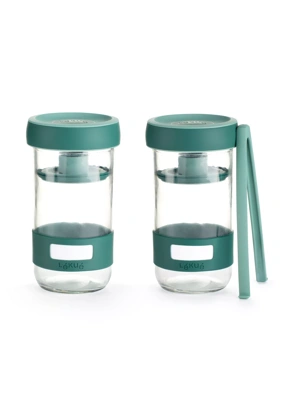Dill
 Dill Photo: Petras Gagilas on Flickr
Dill Photo: Petras Gagilas on FlickrDill is well known for the pickles it flavors and as a lovely flavor added to salads, cold soups, fish and dilly beans. It is easy to grow and reaches its full height of 2 to 3 feet in just four to six weeks. The seeds and the foliage are both flavorful, and the seeds are reputed to be a cure for flatulence.
Because dill develops a deep tap root, it is not suitable for starting indoors or transplanting. Prepare the planting area by adding compost or aged manure to the soil and working it in well. The small seeds can be sprinkled on the soil surface and just pressed down and watered in.
Germination can take from 7 to 21 days. It is important to keep the soil moist during this entire time. Once the seedlings are 3-4" tall, mulch the soil with straw or leaves to help conserve water and keep down the weeds. Dill does best with plenty of water.

You can start picking the delicate fern-like leaves as soon as the plants are about 6" tall. Once dill has reached full height, it will produce lovely yellow flowers in flat umbels (like Queen Anne's lace). The seeds, needed for making pickles, are ready to pick once they have dried and turned light brown.
Dill tends to flop over if planted in a windy spot. A few garden stakes surrounding a clump of dill and interconnected with string will help to keep it vertical.
Dill is quick to bolt, but the leaves are still tasty even after the plants have flowered. If it's the dill foliage you're after, not the seeds, look for dillieties (such as Dukat) that are slow-bolting. To ensure a continuous supply of tender foliage, you can also just plant a pinch of dill seeds every three weeks or so.
Dill leaves freeze well in a freezer-grade plastic bag. It will hold its bright green color for many months. To save the seeds, just hang the whole plant upside down for a few weeks until it's fully dry.
Last updated: 01/29/2021
Print this Article:
Related items
Get the Dirt
Stay up to date on new articles and advice. Please fill out the information below.


